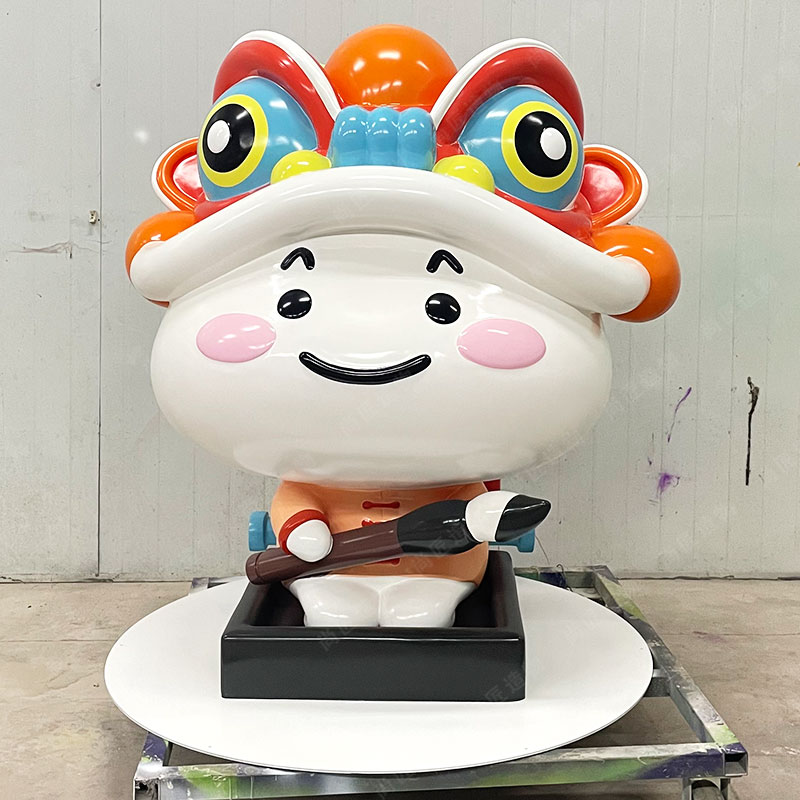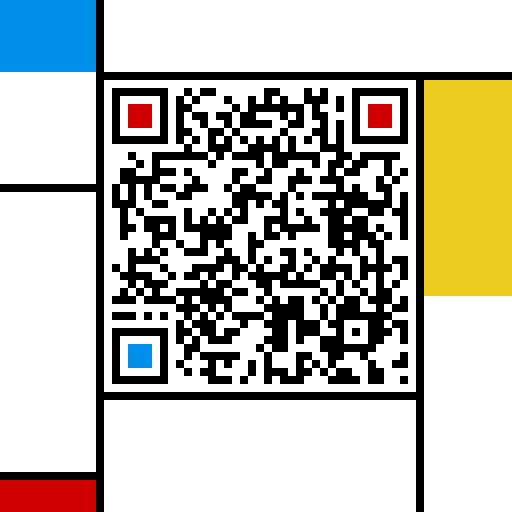Key Takeaways
Combining cartoon-inspired sculptures with mechanized elements requires balancing playful design with functional engineering. Central to this fusion is the integration of kinetic components—such as rotating gears and motorized joints—that maintain the charm of cartoon aesthetics while introducing industrial movement. For instance, 3D-printed joints enable precise articulation, allowing exaggerated character poses to shift dynamically without compromising structural integrity. Meanwhile, Arduino microcontrollers offer programmable control over motion sequences, synchronizing gestures or expressions with mechanical rhythms.
Steampunk-inspired brass detailing can further bridge whimsy and machinery, adding vintage-industrial textures to vibrant forms. This approach not only enhances visual contrast but also grounds fantastical designs in tangible mechanics. For deeper insights into motion-driven art, explore foundational principles of kinetic sculpture. Ultimately, successful projects rely on harmonizing materials, motion systems, and thematic coherence, ensuring each piece tells a story through both form and function.
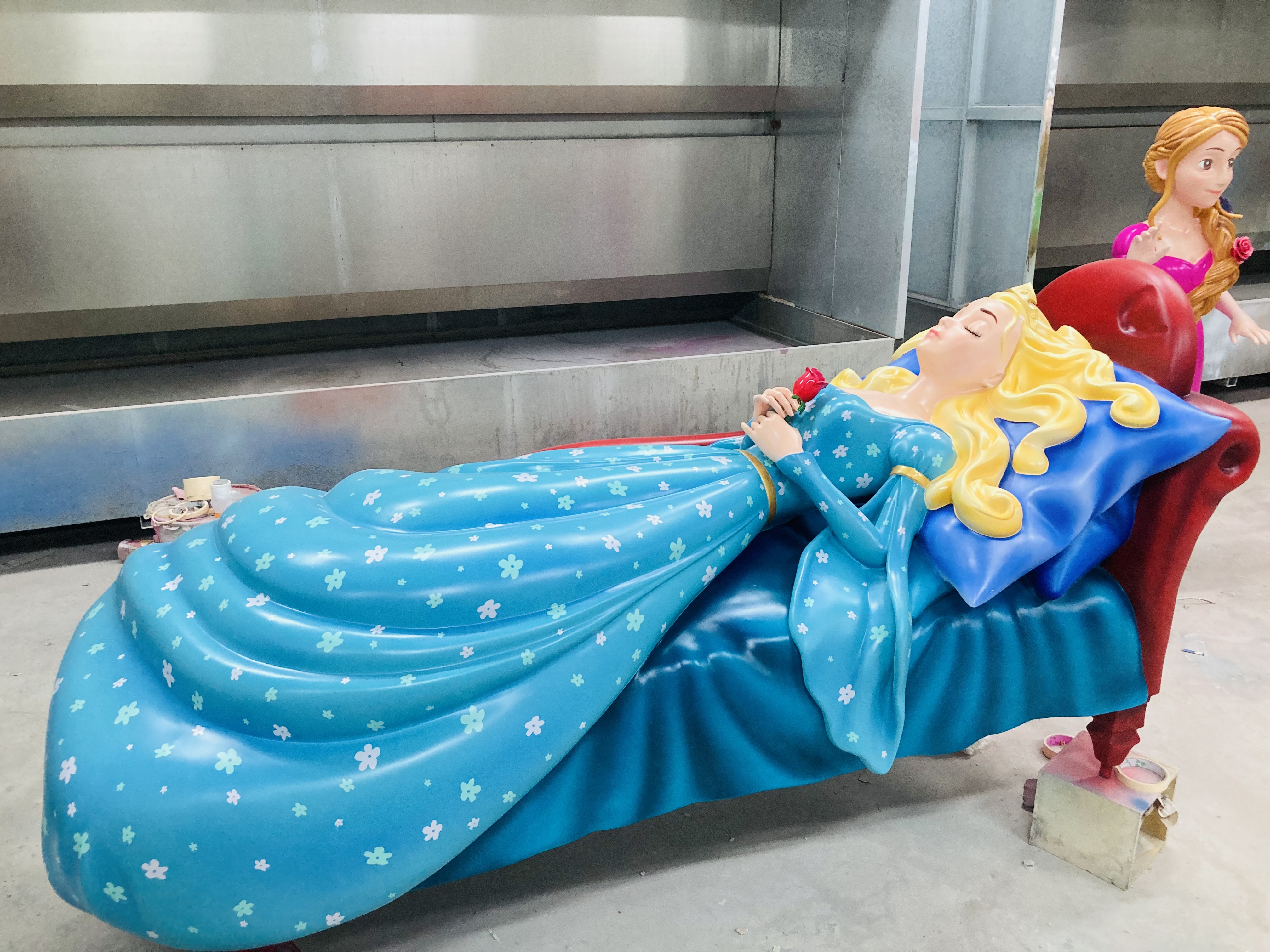
Cartoon Meets Kinetic Mechanics
Combining cartoon-inspired designs with kinetic mechanics requires balancing playful aesthetics and functional engineering. Cartoon sculptures often emphasize exaggerated proportions and vibrant expressions, while kinetic systems rely on precision for motion. To merge these elements, artists might integrate rotating gears into a character’s limbs or embed motorized components beneath whimsical forms. For example, brass detailing—common in steampunk designs—can add industrial texture to cartoon figures without overpowering their charm.
"Kinetic art thrives on contrast. Pairing soft, rounded cartoon shapes with rigid mechanical parts creates visual tension that captures attention," notes a sculptor specializing in IP character sculpture.
When designing joints, 3D-printed connectors offer flexibility for both articulation and stylistic customization. Simple Arduino microcontrollers can automate movements like nodding heads or waving arms, ensuring repetitive motion aligns with the sculpture’s personality. For stability, prioritize lightweight materials (e.g., aluminum or resin) to reduce strain on moving parts. A practical tip: prototype small-scale mechanisms first to test balance before scaling up. This approach ensures the final piece harmonizes artistry with mechanical reliability.
Steampunk Brass Animated Art
Blending steampunk aesthetics with animated brass elements creates a striking intersection of Victorian-era industrial charm and modern kinetic art. Brass, prized for its warm luster and malleability, serves as an ideal material for crafting intricate gears, riveted panels, and sculptural components that mimic vintage machinery. Artists often incorporate clockwork mechanisms to animate cartoon-inspired figures—think whimsical robots with exaggerated features or fantastical creatures adorned with pistons and cogwheels. These designs balance playful forms with functional motion, such as rotating limbs activated by hand-cranked systems or wind-up keys.
The steampunk style emphasizes visible mechanics, allowing viewers to trace the interplay of gears and levers that bring sculptures to life. For example, a brass owl sculpture might feature wing movements synchronized with a pendulum swing, merging organic motion with industrial precision. This approach transforms static Cartoon sculpture into dynamic storytelling pieces, where aged patinas and oxidized finishes enhance the illusion of relics from an alternate, mechanized past. By grounding fantastical concepts in tangible materials and motion principles, artists bridge the gap between imaginative narratives and tactile engineering.
Arduino-Driven Playful Motion
Arduino microcontrollers offer a versatile foundation for infusing cartoon sculptures with kinetic energy. By integrating servo motors, stepper motors, and programmable logic, artists can synchronize mechanical movements with whimsical designs. For instance, rotating gears might trigger a cartoon character’s waving arm, while timed sequences animate facial expressions or bouncing elements. The Arduino’s open-source nature allows for precise calibration of motion speed, direction, and pauses, ensuring playful interactions without compromising structural integrity.
A common application involves pairing brass or stainless steel joints—commonly seen in stainless steel sculpture—with lightweight 3D-printed components. This hybrid approach balances industrial durability with cartoonish proportions. Below is a simplified breakdown of key Arduino components for kinetic sculptures:
| Component | Purpose | Example Application |
|---|---|---|
| Servo Motor | Controlled angular movement | Swinging pendulum or nodding head |
| Stepper Motor | Precise rotational steps | Spinning gears or rotating platform |
| IR Sensor | Motion detection triggers | Interactive eye movements |
| LED Strip | Dynamic lighting effects | Flashing accents on moving parts |
This blend of mechanics and artistry enables sculptures to transition from static displays to engaging kinetic installations. By adjusting code parameters, creators can experiment with erratic or rhythmic patterns, mimicking the unpredictable charm of cartoon animation. Such systems also allow modular upgrades, letting artists scale complexity as technical proficiency grows.
3D-Printed Joints in Mechanized Art
The integration of 3D-printed joints into mechanized sculptures bridges whimsical design with functional engineering. By using lightweight materials like nylon or resin, artists achieve durable yet flexible articulation points that mimic organic movement while supporting mechanical loads. These joints enable complex geometries—such as interlocking gears or rotating limbs—that traditional fabrication methods struggle to replicate. For instance, a cartoon-inspired kinetic sculpture might feature exaggerated elbow hinges printed with hollow channels to reduce weight, allowing smoother interaction with motorized components.
This technique also simplifies customization, as digital models can be adjusted for scale or motion range before printing. When paired with industrial motion systems, 3D-printed joints create seamless transitions between static forms and dynamic sequences. A notable application includes combining printed parts with Fiberglass sculpture frameworks, where rigidity and flexibility coexist to support repetitive mechanical actions. The precision of additive manufacturing ensures consistent performance, making it ideal for installations requiring synchronized movements, such as waving arms or nodding heads in character-driven artworks.
Rotating Gears in Cartoon Sculptures
Rotating gears introduce a functional yet visually engaging element to cartoon-inspired sculptures, bridging playful design with mechanical precision. These components often serve dual purposes: they drive kinetic motion while amplifying the whimsical narrative of the artwork. For example, oversized brass gears—commonly associated with steampunk aesthetics—can be integrated into a cartoon character’s limbs or accessories, creating synchronized movements that mimic walking or waving. The contrast between polished metal surfaces and vibrant, exaggerated forms enhances the tactile and visual appeal of the piece.
To ensure seamless operation, gears must be calibrated for smooth rotation, often using lightweight alloys or 3D-printed polymers for reduced friction. Artists might incorporate realistic sculpture techniques to balance industrial rigidity with organic curves, ensuring gears appear both functional and harmoniously embedded within the cartoon framework. Modular designs allow gears to be repositioned, enabling dynamic reconfiguration of motion patterns without compromising structural integrity. This approach not only highlights technical craftsmanship but also reinforces the interplay between art and engineering, a recurring theme in mechanized installations.
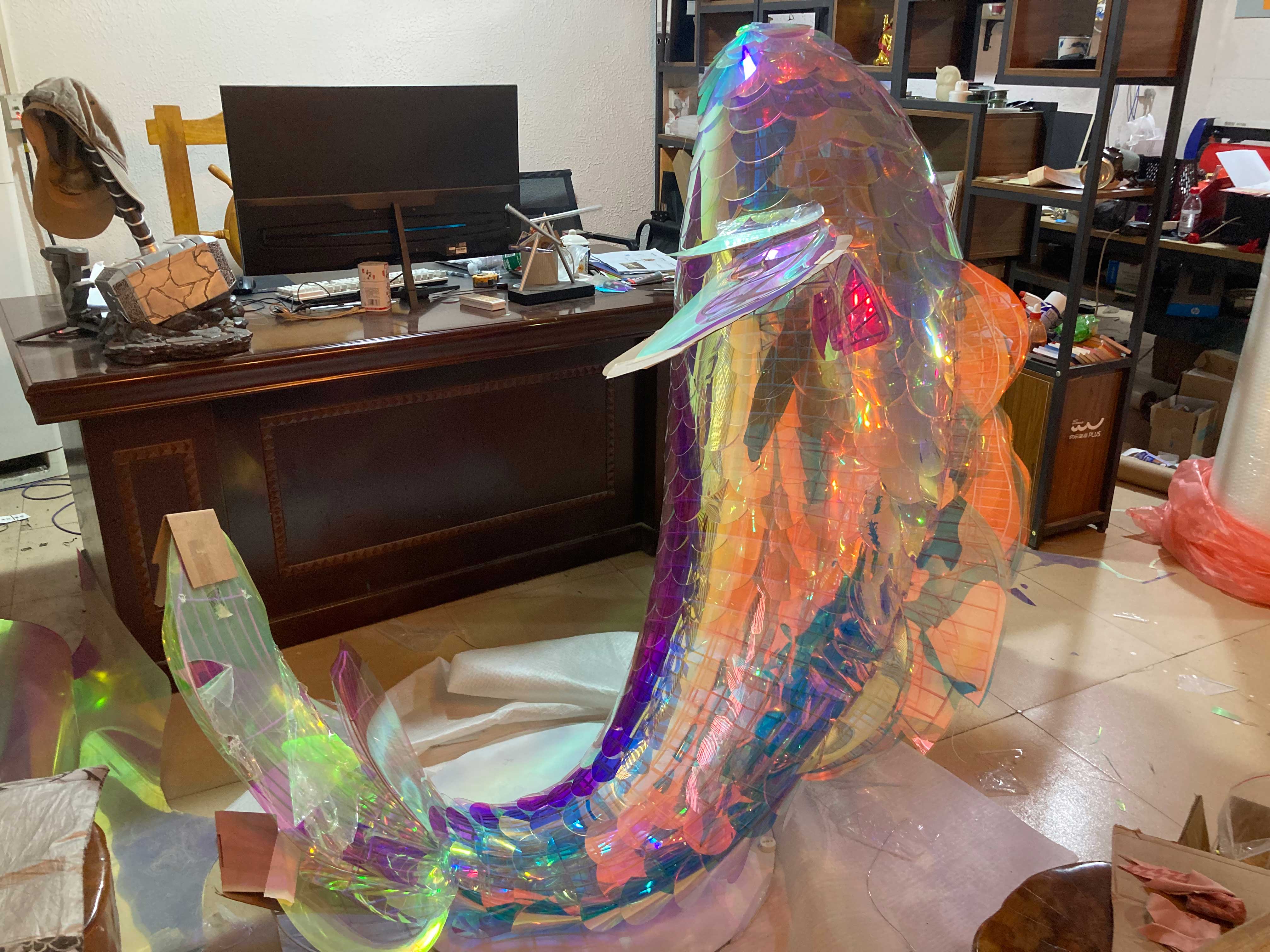
Dynamic Kinetic Art Sequences
Creating dynamic sequences in mechanized sculpture installations requires balancing cartoon-inspired fluidity with precise mechanical programming. By integrating timed actuators and rotational gear systems, artists can transform static cartoon forms into rhythmic, motion-driven narratives. For instance, a sculpture depicting a whimsical character might incorporate synchronized servo motors to mimic walking or gesturing, with brass cogs and chain drives adding visible industrial texture.
Central to this process is the calibration of movement intervals to evoke storytelling—a slow turn of a gear could suggest curiosity, while rapid piston-like motions might convey excitement. Steampunk-inspired clockwork mechanisms often serve as visual anchors, their metallic finishes contrasting with brightly painted cartoon surfaces. Programmable Arduino microcontrollers enable precise control over these sequences, allowing creators to loop patterns or trigger movements through sensors.
Material choices further enhance kinetic storytelling: 3D-printed polymer joints provide lightweight durability for repetitive motions, while laser-cut steel frames ensure structural integrity during rotation. Such hybrid designs bridge the gap between playful aesthetics and functional engineering, demonstrating how calculated mechanical rhythms can breathe life into cartoon-inspired forms without compromising their charm.
Merging Whimsy with Industrial Motion
Combining playful cartoon aesthetics with industrial motion systems requires balancing imaginative design with functional mechanics. Industrial materials like brass, steel, and aluminum provide structural integrity, while whimsical forms—such as exaggerated character proportions or surreal shapes—inject personality into otherwise rigid frameworks. For instance, a rotating gear system might drive the motion of a cartoon animal’s tail, blending steampunk-inspired brass detailing with animated expressions. Servo motors or pneumatic actuators can be discreetly integrated to create rhythmic movements, such as a nodding head or swaying limbs, without overshadowing the sculpture’s visual charm.
To maintain coherence, designers often anchor fantastical elements to industrial logic. A sculpture of a winking robot, for example, could use synchronized pulley systems to mimic eyelid movements, ensuring motion appears both intentional and organic. Color palettes also play a role: muted metallic finishes contrast with vibrant accents, softening the industrial edge while preserving mechanical authenticity. This approach ensures that motion enhances, rather than distracts from, the sculpture’s narrative—whether it’s a dancing clockwork creature or a levitating steampunk-inspired figure. By treating mechanics as an extension of artistic storytelling, creators bridge the gap between childlike wonder and technical precision.
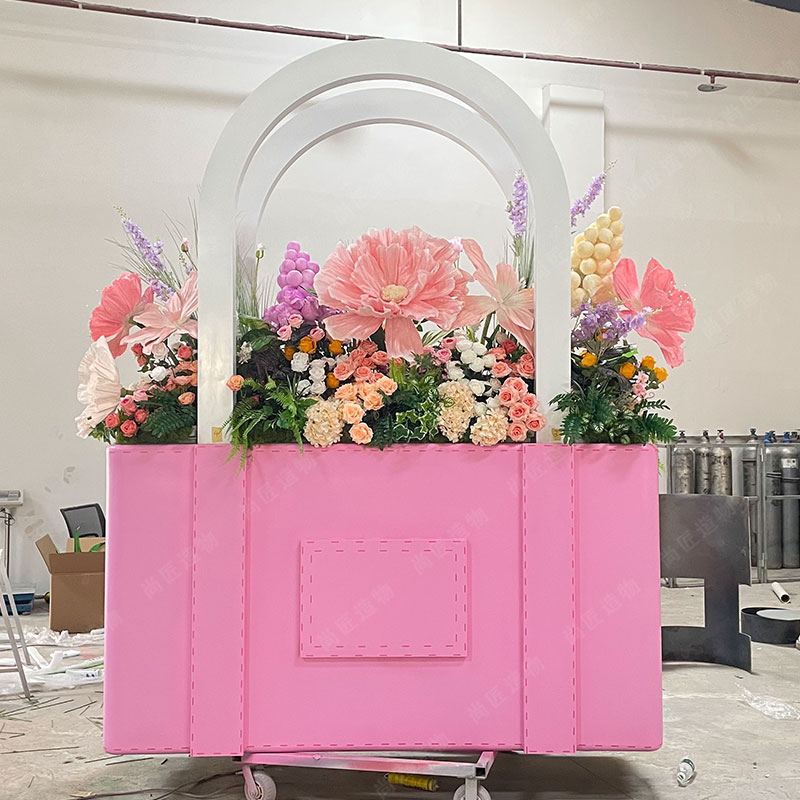
Conclusion
The integration of cartoon sculpture into mechanized art represents a deliberate fusion of imaginative design and functional engineering. By incorporating elements such as rotating gears, Arduino-controlled motion systems, and 3D-printed joints, artists can bridge the playful essence of cartoon aesthetics with the precision of industrial mechanics. This approach not only preserves the whimsical charm of animated forms but also introduces structured movement through steampunk-inspired brass detailing or programmable kinetic sequences.
The balance between artistic expression and technical execution highlights the importance of material choices, such as lightweight polymers for dynamic joints or polished metals for visual contrast. While maintaining simplicity in design, these installations demonstrate how mechanized components can amplify narrative elements—transforming static sculptures into interactive storytelling devices. As artists continue to experiment with hybrid techniques, the potential for evolving this interdisciplinary craft grows, offering new avenues to reinterpret traditional cartoon motifs through modern mechanical frameworks.

Frequently Asked Questions
What materials work best for combining cartoon aesthetics with mechanical elements?
Brass and stainless steel provide durability for moving parts while allowing whimsical shapes. Powder-coated aluminum offers color versatility for cartoon features, and 3D-printed polymers enable precise, lightweight joints.
How do Arduino systems enhance kinetic sculpture dynamics?
Microcontrollers like Arduino allow programmable motion patterns, synchronizing gears or limbs for lifelike sequences. Sensors can add interactive elements, such as motion-triggered animations in character sculptures.
Can steampunk designs coexist with modern cartoon styles?
Yes—exposed gears and riveted brass plates complement exaggerated facial expressions when balanced. Gradients of aged metal paired with bold acrylic hues create visual harmony between industrial and playful elements.
What safety considerations apply to rotating mechanical sculptures?
Secure motor enclosures, rounded gear edges, and low-torque actuators minimize risks. For public installations, weatherproof casings and tamper-resistant fasteners are recommended.
How does 3D printing improve mechanized joint design?
Customizable ball joints and interlocking segments allow complex articulation unachievable with traditional machining. Nylon-based filaments withstand repetitive motion, while resin prints capture fine sculptural details.
Are dynamic sequences harder to maintain than static sculptures?
Lubricated bearings and modular components simplify repairs. Regular calibration of servo motors and periodic gear alignment checks ensure sustained performance in animated installations.
 ch
ch English
English

